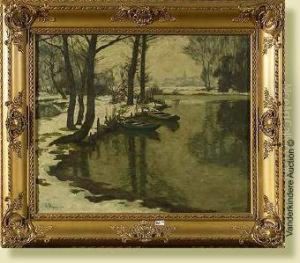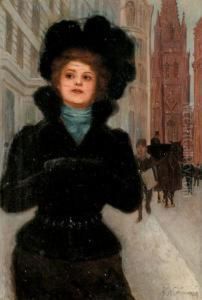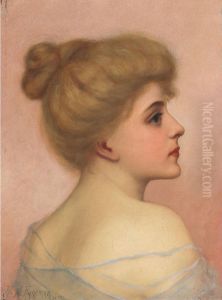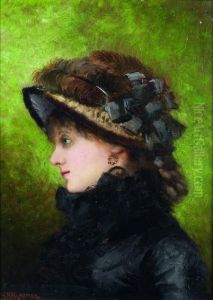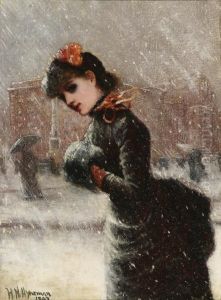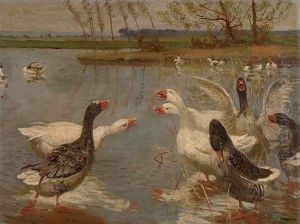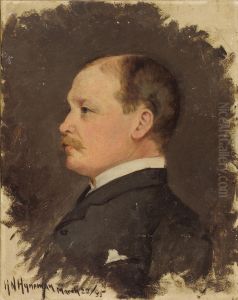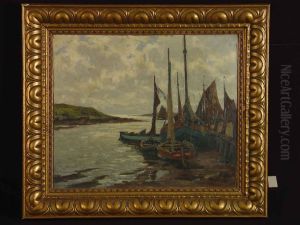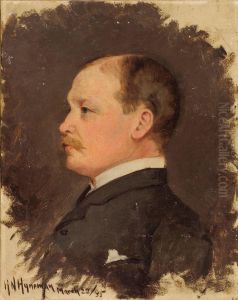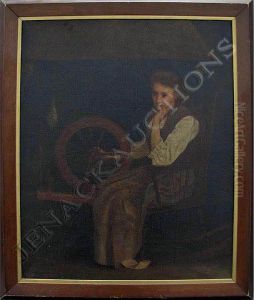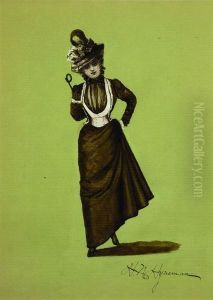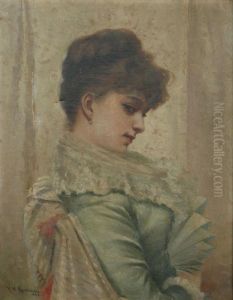Herman Hyneman Paintings
Herman Hyneman was an American painter known for his genre scenes and portraits, born in 1849 in Philadelphia, Pennsylvania. He was part of a wave of late 19th-century artists who focused on the realistic portrayal of everyday life, as well as the inner emotional world of their subjects. Hyneman's early life was marked by a keen interest in art, prompting him to pursue his passion through formal education. He studied at the Pennsylvania Academy of the Fine Arts in Philadelphia, where he was influenced by Thomas Eakins, a leading figure of American realism. Seeking further artistic development, Hyneman traveled to Paris in the early 1870s to study at the École des Beaux-Arts, immersing himself in the vibrant European art scene.
During his time in Europe, Hyneman was particularly influenced by the works of the French realists and impressionists, which is evident in his use of light and color. Upon his return to the United States, he settled in New York City, establishing himself as a skilled painter and becoming a member of various art organizations, including the National Academy of Design. Hyneman's work often depicted the lives of ordinary people, with a particular focus on Jewish subjects, reflecting his own heritage. He sought to capture the humanity and dignity of his figures, employing a sensitive and nuanced approach to his compositions.
Hyneman's contributions to American art were recognized during his lifetime, and he exhibited widely, including at the Paris Salon, the Pennsylvania Academy of the Fine Arts, and the National Academy of Design. Despite his success, he remained committed to his artistic vision, often exploring themes of identity, community, and the human condition. Herman Hyneman passed away in 1907, leaving behind a legacy of work that continues to be appreciated for its emotional depth and technical mastery. His paintings are part of the collections of several prestigious institutions, reflecting his enduring impact on the art world.
